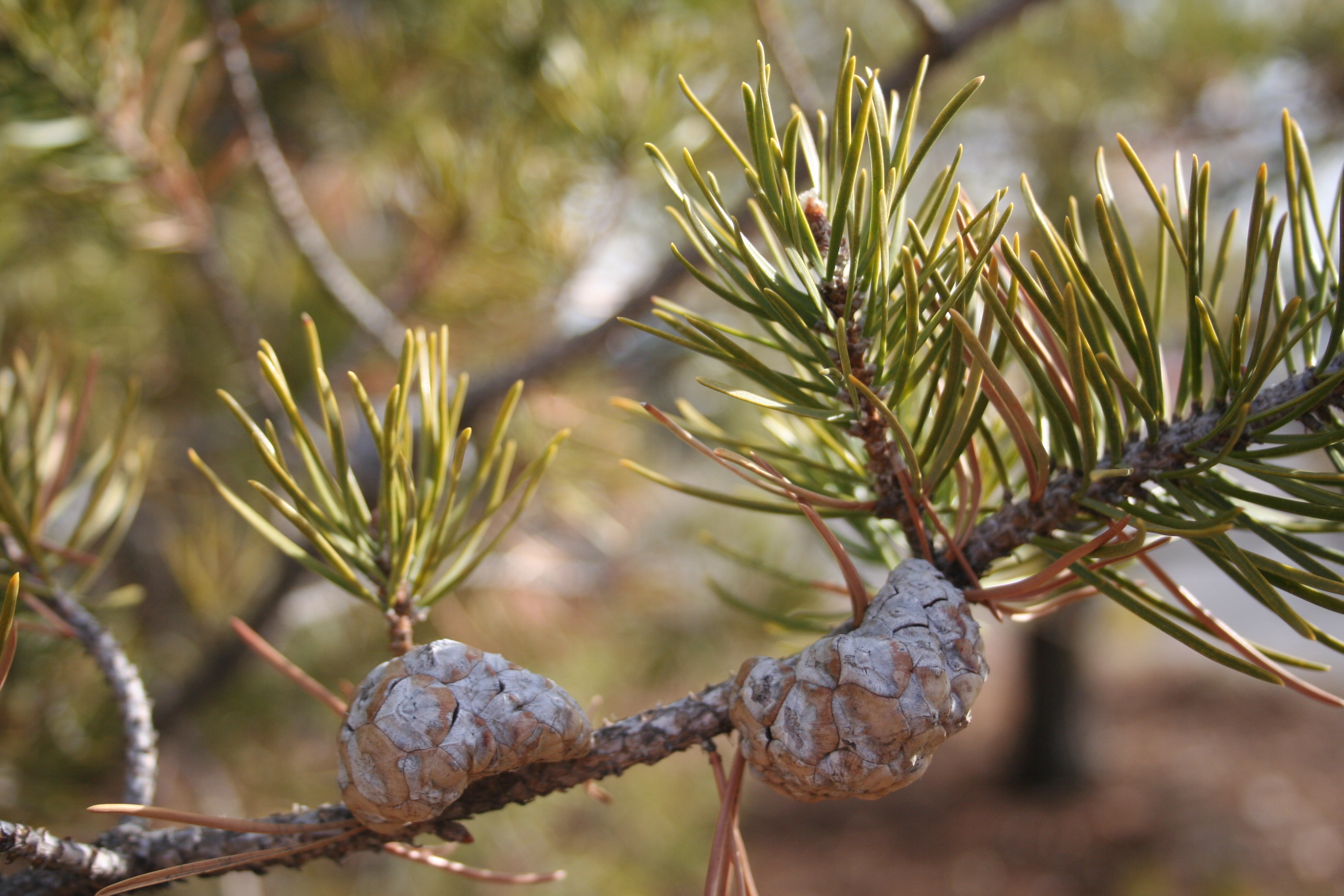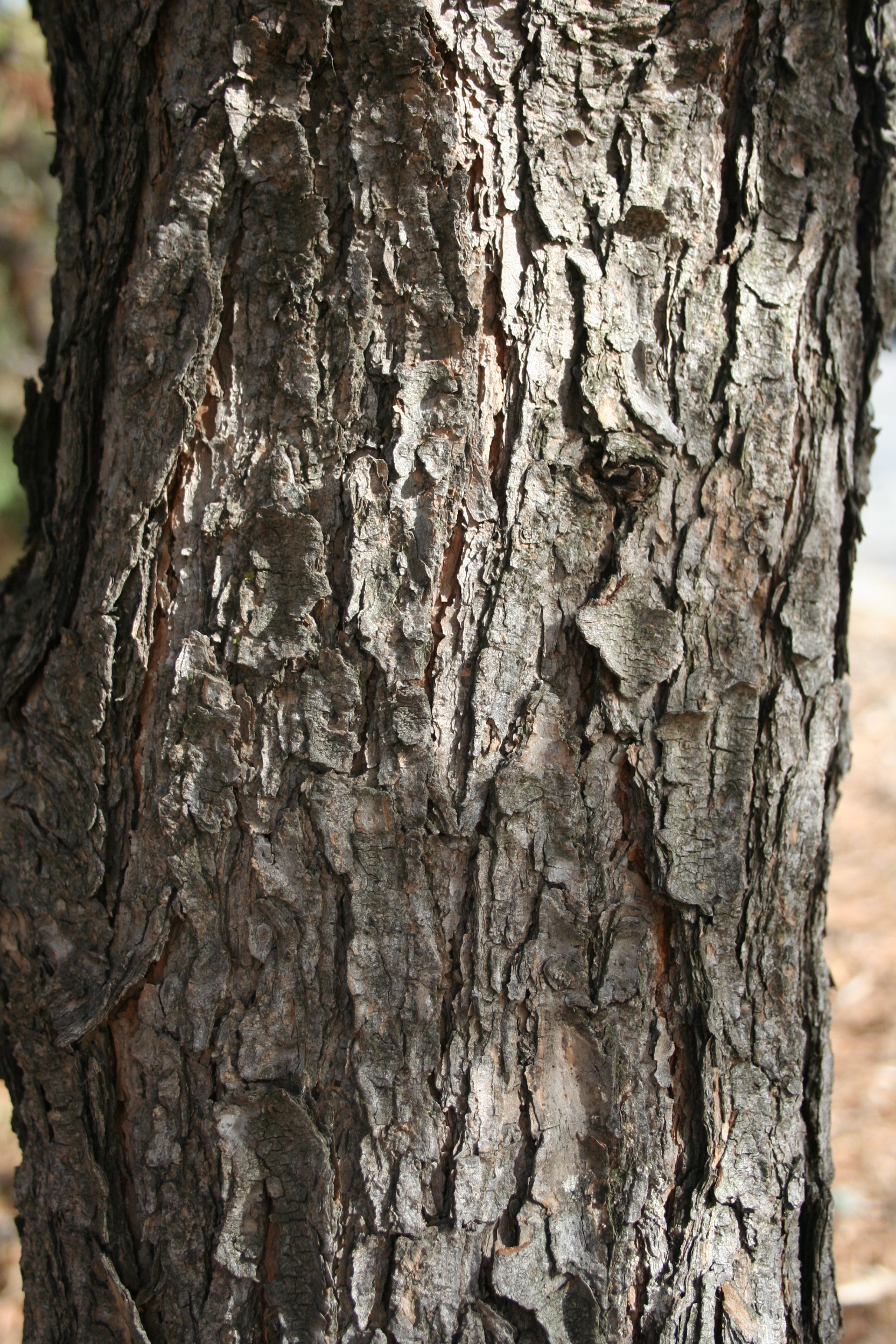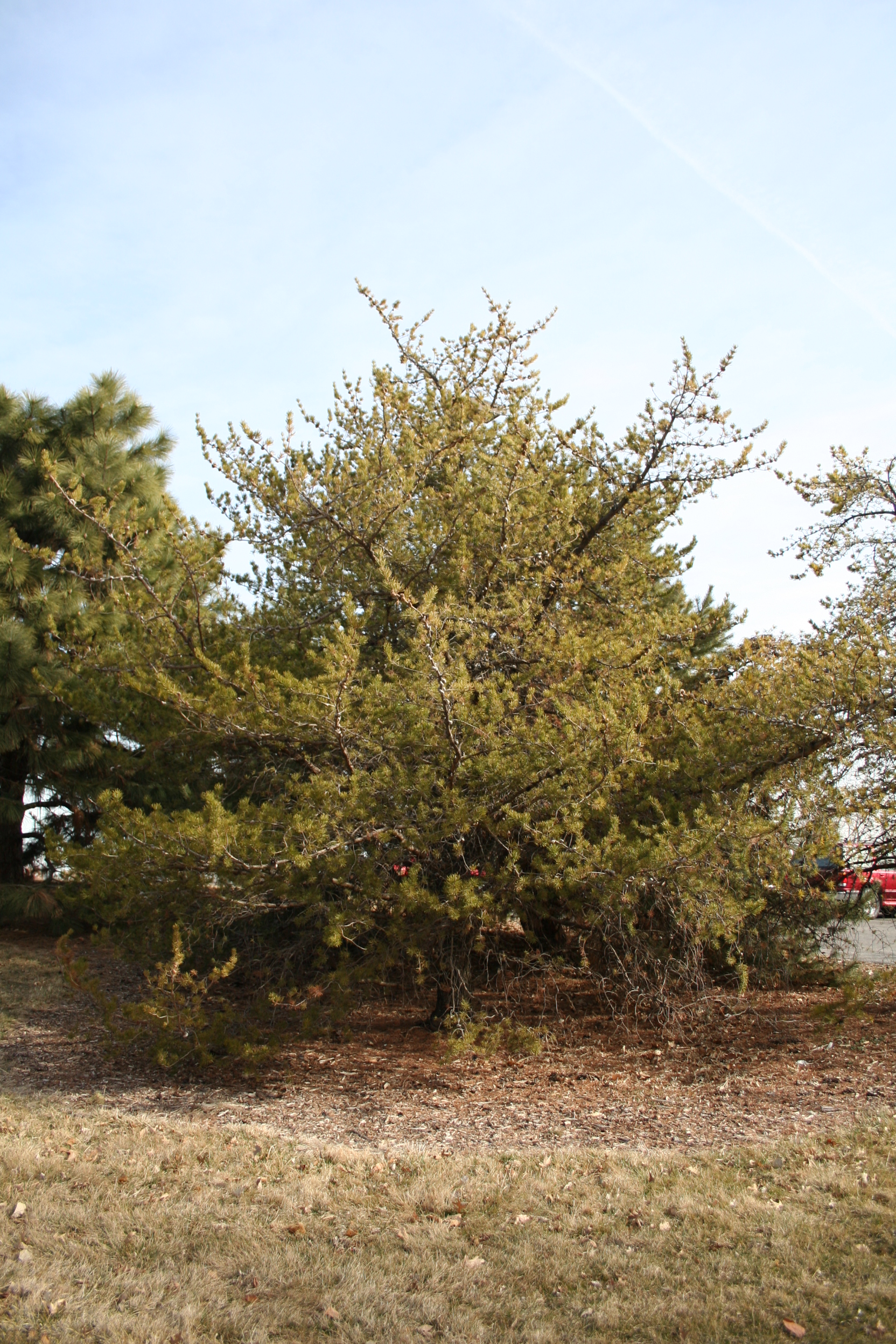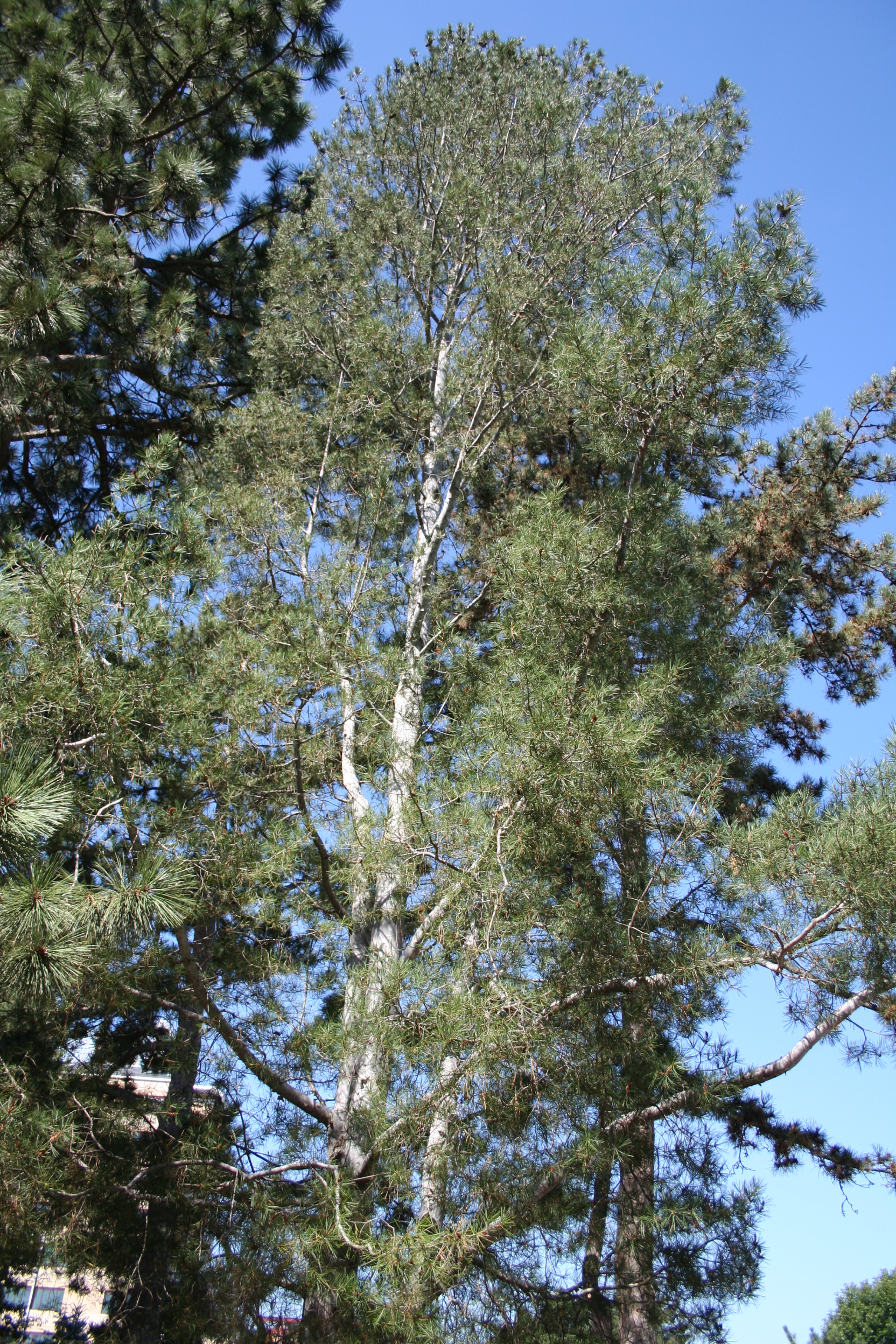Pine, Jack
Pinus banksiana, Coniferous
Jack pine is a scrubby, northern pine native to much of Canada and south to the Great Lakes and northern New England. It grows further north in Canada than any other native pine. It is extremely cold hardy and drought tolerant and has been used in shelterbelts and conservation plantings in Nebraska where little else will grow.

Where To Grow

Size at Maturity
| Tree Height | Tree Spread |
| 30-40'' | 20-30' |
Tree Characteristics
Jack pine is a small to medium-sized evergreen noted for its scraggly appearance and ability to grow in poor soils. Its needles are short, stiff, olive green (to 1.5” long) in bundles of two. Its crown is small, irregularly rounded or spreading and flattened over time. Branches descending to spreading-ascending and poorly self-pruning – often retaining dead branches longer than other pines. Its strongly-curved cones are fire-adapted and retained for several years, resulting in a coarse appearance. The trunk is often crooked; bark at first dark and scaly, later develops scaly ridges.
Wildlife Benefits
White-tailed deer browse saplings and young trees and snowshoe hares feed on young seedlings. Porcupines feed on bark that often leads to deformed trees. Red squirrels, chipmunks, mice, goldfinches, and robins consume seeds. The sole breeding grounds for the rare Kirtland’s warbler are certain dense tracts of young jack pines (less than 20’ tall) in northern Michigan
Utilization
Jack pine is an important timber species in Canada and the Lake States of the US. Trees produce pulpwood, lumber for construction, telephone poles, fence posts, mine timbers, and railroad ties. Jack pine is sometimes used as Christmas trees and also for stabilization of watersheds.
Additional Considerations
In cool summer climates, healthy, well-maintained trees usually have few major problems. However, Jack Pine often struggles in the heat and humidity of the eastern Great Plains.
Interesting Facts
A mature stand of jack pine may have as many as 2 million seeds per acre stored in unopened cones. The serotinous cones are sealed closed with a resinous bond that requires fire to open and liberate the seeds.


